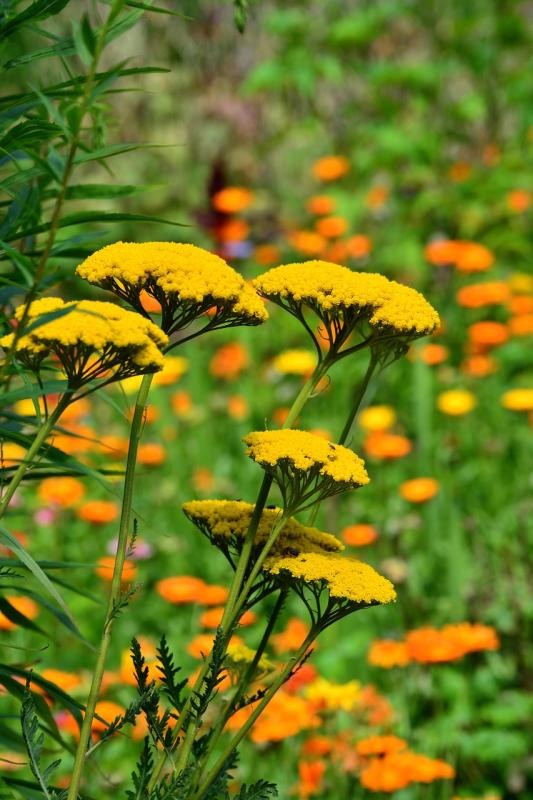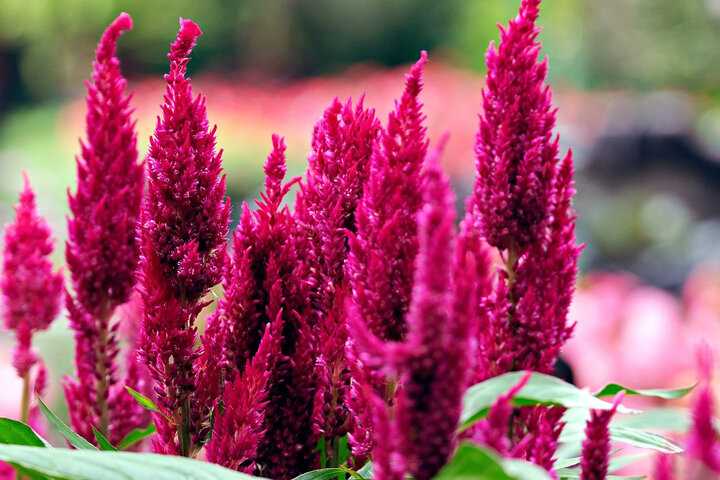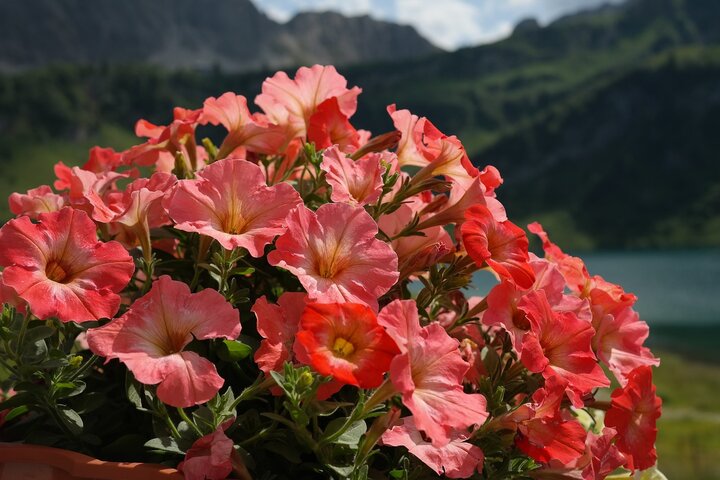Sarah Browning, Nebraska Extension Educator

Yarrow, Achillea spp., is a perennial wildflower for hot, dry conditions. Image by Pixabay.
Even a summer with normal rainfall has plenty of hot, dry weather. For flowers that thrive under these conditions, pick some from the following list:
Yarrow (Achillea filipendulina). The domesticated version of the perennial wildflower is drought tolerant and produces quantities of 3- to 5-inch golden-yellow flowers that are excellent for fresh or dried arrangements. Recently introduced cultivars offer flowers in a range of colors from dark pink, coral and red to yellow and cream. Plants bloom from June through August.
Butterfly milkweed (Asclepias tuberosa). This is another perennial wildflower. Butterflies love the red-orange blossoms, which start to appear in June and continue into August. Plants reach 2 to 3 feet tall.

- Celosia plumosa has plume-shaped blossoms
- Celosia cristata is known as cockscomb for the shape of its flowers.
Flower colors range from cream, yellow and bronze to pink, apricot, scarlet and wine-red. For best results, start early from seed or buy bedding plants without blooms.
Spider plant (Cleome). These annual plants may reach 6 feet tall in full sun and produce large, lacy flowers in violet, rose and white. They can be sown from seed in the garden for a tall backdrop for shorter plants, as accents, or as floral screens or in annual hedges.
Cosmos or Mexican aster. Cosmos bipinnatus and C. sulphureusare heat and drought tolerant and flower prolifically on poor soil, as long as it's well drained. Colors range from yellow, gold, orange and scarlet through pink, rose and white. Foliage is fine-textured and fernlike. Cosmos blooms quickly from seed sown in the garden after the danger of frost is past and persists until killed by frost in the fall.
Flowering tobacco (Nicotiana alata). Lush green foliage serves as the backdrop for tubular, star-shaped blossoms in pink, rose, red, lime-green and white. Varieties range in height from 12 inches to 4 to 6 feet. An annual, it can be grown in the garden from seed or purchased as bedding plants.

Moss rose (Portulaca grandiflora). This is the plant for a sunny spot with sandy soil. Its creeping stems will produce a profusion of roselike flowers in shades of orange, pink, purple, red, yellow and white. Flowers close up at night.
Sunflowers (Helianthus annuus). The name doesn't lie -- plant these native American wildflowers in full sun and step back. A proliferation of sunflower varieties in recent years has resulted in a range of plant sizes, flower sizes and flower colors unknown not too long ago. The tasty seeds of some varieties are a bonus, though it's usually the birds and squirrels that reap the harvest.

Zinnia (Zinnia species and hybrids). Once zinnias get established in the garden, they do best in hot, dry weather (powdery mildew may be a problem in humid conditions). Easy from seed, zinnias are also available as bedding plants. The wide variety of plant sizes, flower sizes and types, and flower colors available in zinnias makes them useful for beds, borders and cutting.
The author would like to acknowledge the contribution of Don Janssen, former UNL Extension Educator, who authored the first edition of this publication.
Images:
- Celosia plant with bright red color and plume-shaped blossoms.
- Petunias come in many wonderful colors, these are bright purple and once established, they thrive on drought.
- Yucca plants have swordlike green leaves with ivory-white flower spikes.
Search Our Archive
Associated Video
Plants For Hot & Dry Areas
Nebraska Extension Educator Kelly Feehan discusses hot and dry areas of your home landscape and details several ornamental plants that can thrive in those conditions.